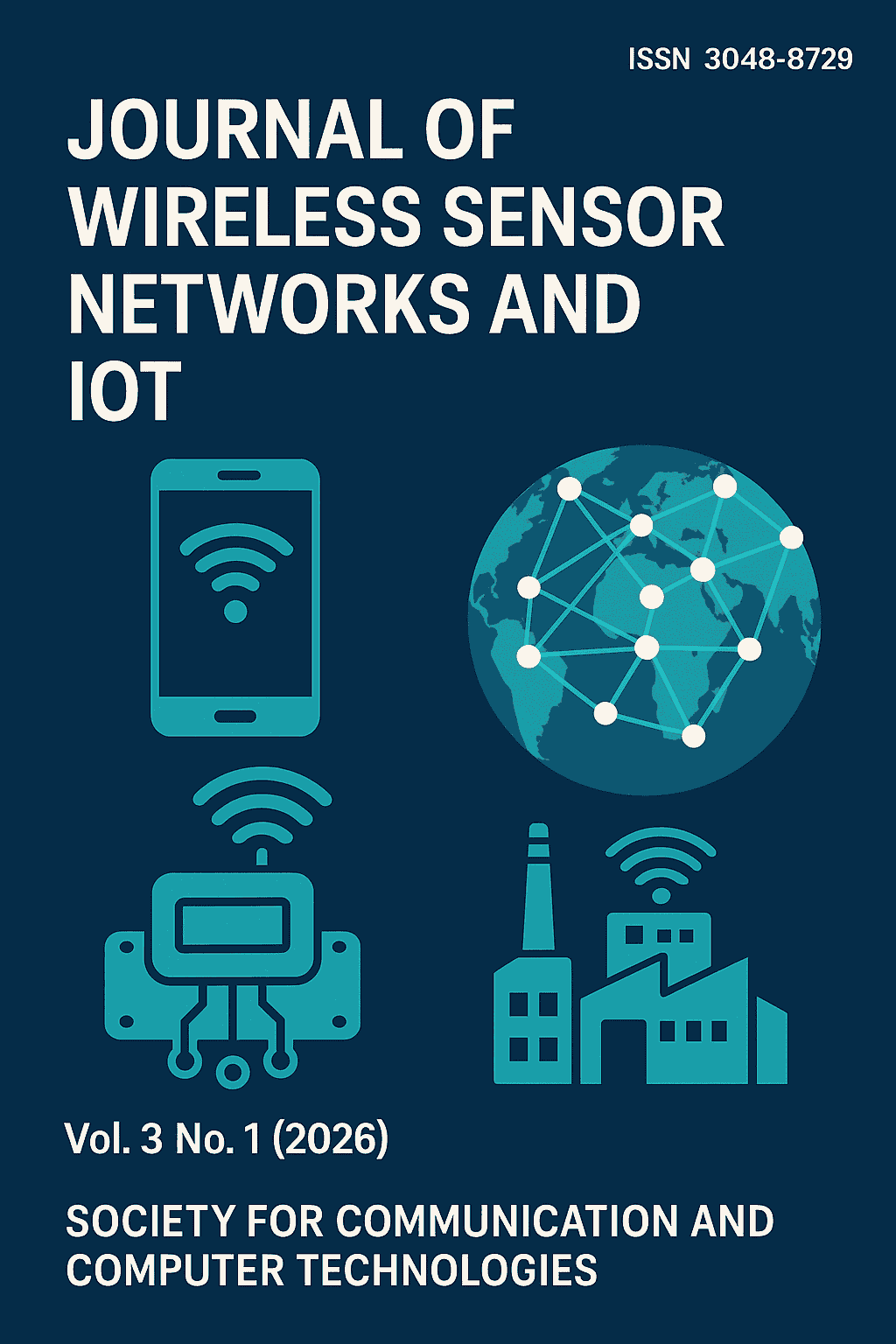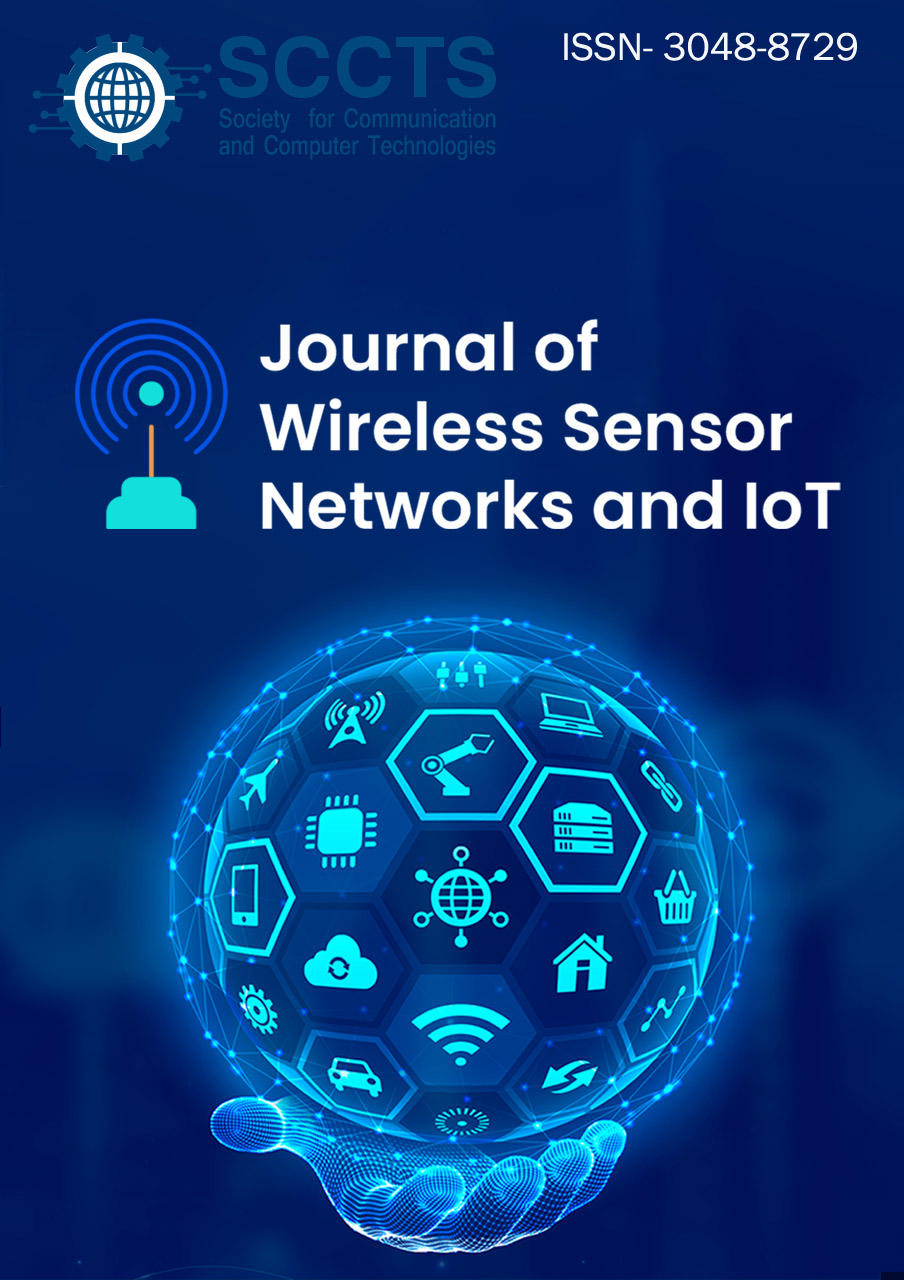Real-Time Environmental Monitoring Using LoRa-Enabled Wireless Sensor Networks: Challenges, System Design, and Mitigation Strategies
DOI:
https://doi.org/10.31838/WSNIOT/03.01.13Keywords:
LoRa, Wireless Sensor Networks (WSNs), Environmental Monitoring, Real-Time Data, Low-Power Wide Area Network (LPWAN), Duty Cycling, Latency, Interference Mitigation, Channel Adaptation, IoT Communication.Abstract
The issue of urban health management, climate resilience, and disaster mitigation requires real-time environmental monitoring when reaching informed decisions. Amongst Low Power Wide Area Network (LPWAN) protocols, LoRa (Long Range) has emerged as a dominant framework that makes it possible to send long-range, low power consuming messages within Wireless Sensor Networks (WSNs). The current paper includes an in-depth investigation of the implementation, deployment and testing of a LoRa-based WSN system, optimized to be used in real-time environmental monitoring. The designed system structure combines environmental sensor, LoRa transceivers, and edge/cloud connectivity and have a scalable star-shaped topology. We explore some major performance limitations such as latency, energy usage, interference, and a small payload capacity and provide a set of corrective measures: adaptive duty cycle, priority scheduling and interference sensitive channel selection. Performance gains are achieved to a considerable extent as shown on simulations and real world tests at a 1.5 km 2 field trial with 20 sensor nodes. Findings indicate that adaptive duty cycling cut down energy consumption by 40 percent, priority-aware transmission and dynamic channel selection enhanced data latency and packet delivery ratio by 27 percent and 14 percent respectively. These results verify that low-power, LoRa-based WSNs have the potential to be used in a variety of terrain and application configurations because they provide reliable and timely delivery of environmental data given proper architectural and protocol-level optimizations are applied to them. This project helps in researching the future of monitoring systems in infrastructures of smart environments, building resilience and energy-efficient systems.






